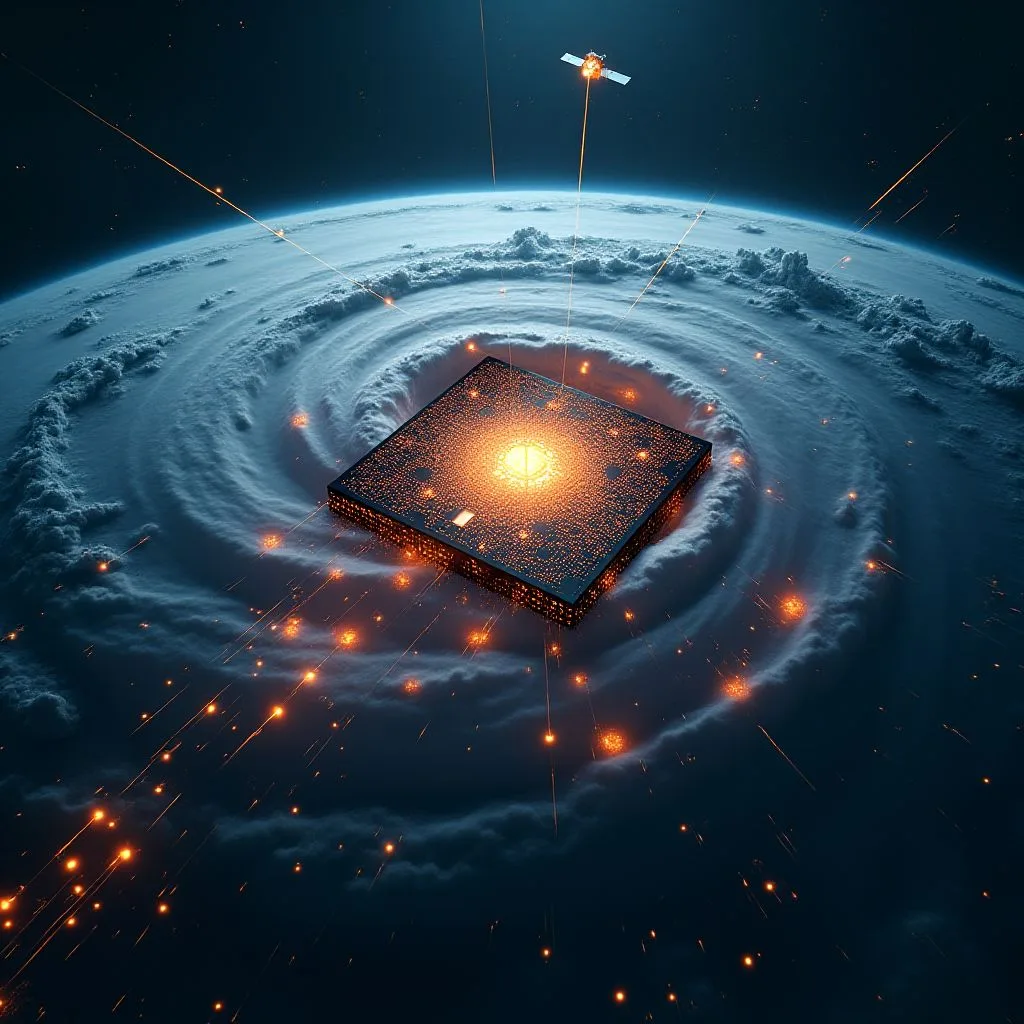Hey awesome folks, welcome back to The Awesome Blog! Today’s hot (and cold, windy, rainy, and occasionally hail-ish) topic: severe weather forecasting. Yep, that’s right, predicting those angry tantrums Mother Nature throws, from tornadoes to hurricanes, like a cosmic two-year-old with a vendetta.
Weather Watching: From Wizards to Weather Satellites
Once upon a weather vane, predicting the weather involved staring at clouds and guessing if you needed an umbrella or ark. Gradually, we swapped folklore for telegraphs, radar, and eventually satellites. Now we’re spying on weather systems from space like nosy neighbors surveilling the neighborhood cookout—just with fewer burgers and more moisture data.
Doppler Radar: Weather’s Ultimate Spy Gadget
If James Bond needed to predict if Goldfinger’s barbecue would be washed out, he’d probably turn to Doppler radar. This radar sends radio waves into the sky and listens carefully to see if raindrops or hailstones are cruising toward or away from us. Yes, it’s like bats using echolocation, but way cooler because…radar.
Supercomputers: Crunching Numbers Like Hungry Hippos
Behind every accurate weather forecast is a room full of supercomputers running mathematical models, gobbling data faster than kids attacking a candy-filled piñata. These digital beasts combine satellite images, radar info, weather balloons, and tons of atmospheric math to churn out predictions faster than you can say “umbrella.”
The Physics of Storms: It’s All About the Drama
Storms don’t just appear—they demand an entrance, complete with skyrocketing moisture, wind shear spinning dramas, and instability that makes a soap opera look tame. Tornadoes happen when clouds do the twist (not on TikTok, sadly), and hail forms when raindrops get carried sky-high and freeze solid—an ice elevator of doom.
AI to the Rescue: Teaching Computers to Predict Chaos
Now we’re recruiting robots! Well, kind of. Artificial intelligence and machine learning take these complex weather patterns and learn to spot hidden signs of stormy mischief. Think Sherlock Holmes, if Sherlock was digital and obsessed with thunderstorms instead of obscure crimes.
- Machine Learning for Better Modeling: Computers learn atmospheric secrets humans can’t see.
- Deep Learning (Not Just Meditation): Algorithms spot severe weather patterns better than a storm-chasing paparazzi.
- AI Data Assimilation: Robots read data faster than college students cramming before finals.
- Hybrid AI-NWP Models: Marrying algorithms with supercomputer skills–the ultimate weather forecasting power couple.
Citizen Science: You Too, Can Be a Weather Hero!
Ever wanted to be a superhero without radioactive spiders? Storm spotting networks like Skywarn make this possible. Volunteers everywhere are reporting weather conditions and filling gaps (especially where tech fails). It’s like Pokémon Go, but you’re collecting data points instead of Pikachus.
Weather Apps and Gadgets: How Not to Get Blown Away
Today’s weather apps can instantly alert you if severe weather fancies tap dancing in your yard. Some apps even let users submit their own observations, transforming everyday people into weather warriors. And let’s face it, saying “my app told me it’s raining” is the new “it’s raining men.”
When Forecasting Goes Wrong: Limitations and Challenges
Even tech has its days. Sparse data collection, incomplete radar coverage, and modeling limitations mean sometimes weather forecasts become about as reliable as Netflix recommendations after your cat binge-watched documentaries.
Bridging the Weather Communication Gap
Sometimes, forecasts get lost in translation, like ordering tacos and ending up with tofu. Effective, quick communication tailored for different communities is crucial. Simple language, multiple channels (TV, mobile, social media), and multilingual alerts ensure everyone knows whether they’ll need umbrellas or arks.
Ethics in Forecasting: To Tweet or Not to Tweet the Storm?
Advancing forecasts brings new dilemmas. Privacy issues over location tracking, equitable access to info (because storms don’t discriminate, but human infrastructure does), and clearly communicating uncertainty are vital. So please remember, a 70% chance of rain isn’t an invitation to angrily tweet if your picnic stays dry.
Key Takeaways: Weather or Not, Here We Come!
- Advances in tech (radar, satellites, supercomputers, AI) make storm chasing less guesswork and more science.
- New tech and citizen science let everyone play a part in weather safety.
- Forecasts still face limitations; increased accuracy relies on better data networks and modeling improvements.
- Effective, inclusive, ethical communication can save lives.
Predicting weather isn’t perfect—yet—but with continued innovation, we’ll soon forecast storms as casually as we check Instagram. And remember, folks, the only thing scarier than severe weather is bad karaoke. Stay tuned, stay informed, and keep enjoying the awesome life with The Awesome Blog!

Leave a Reply